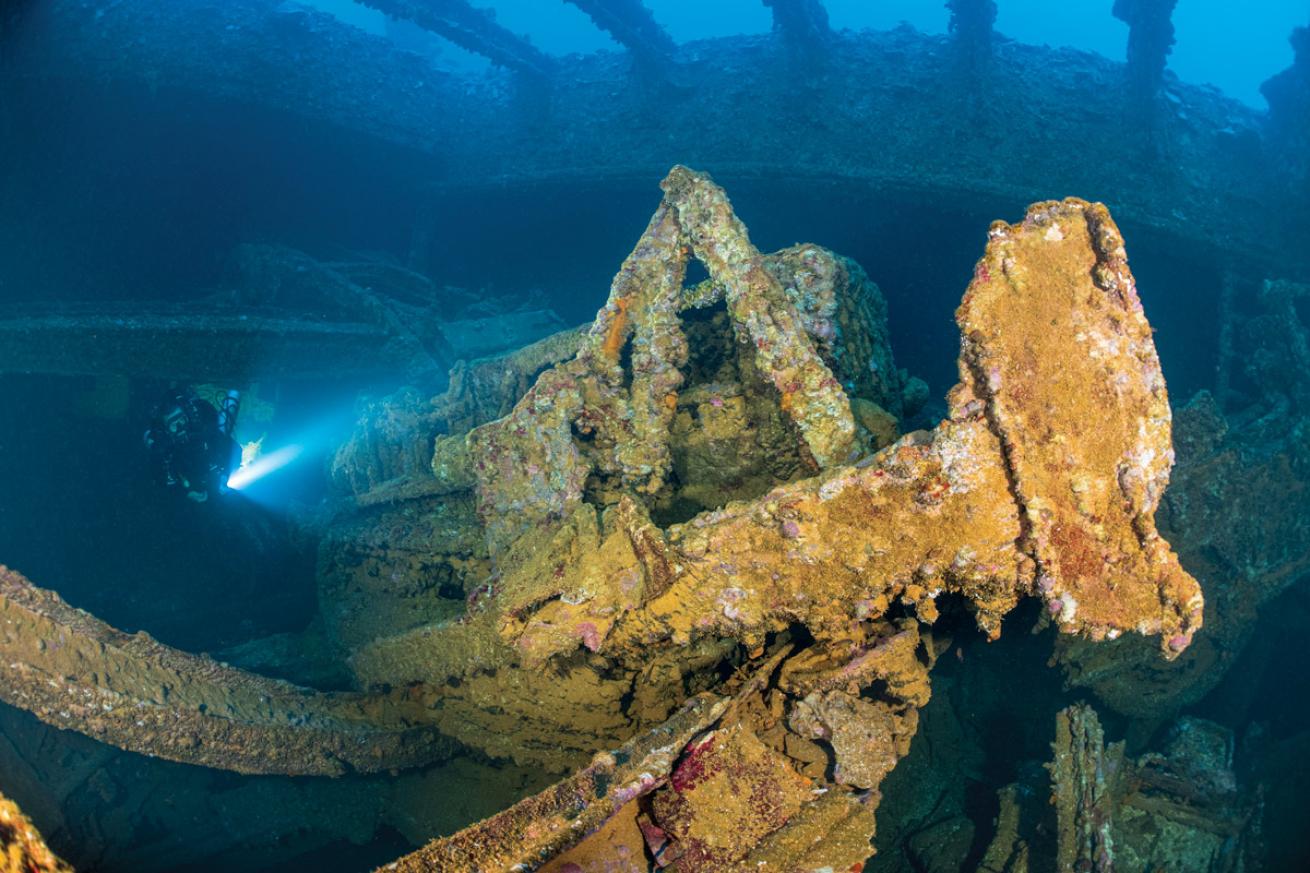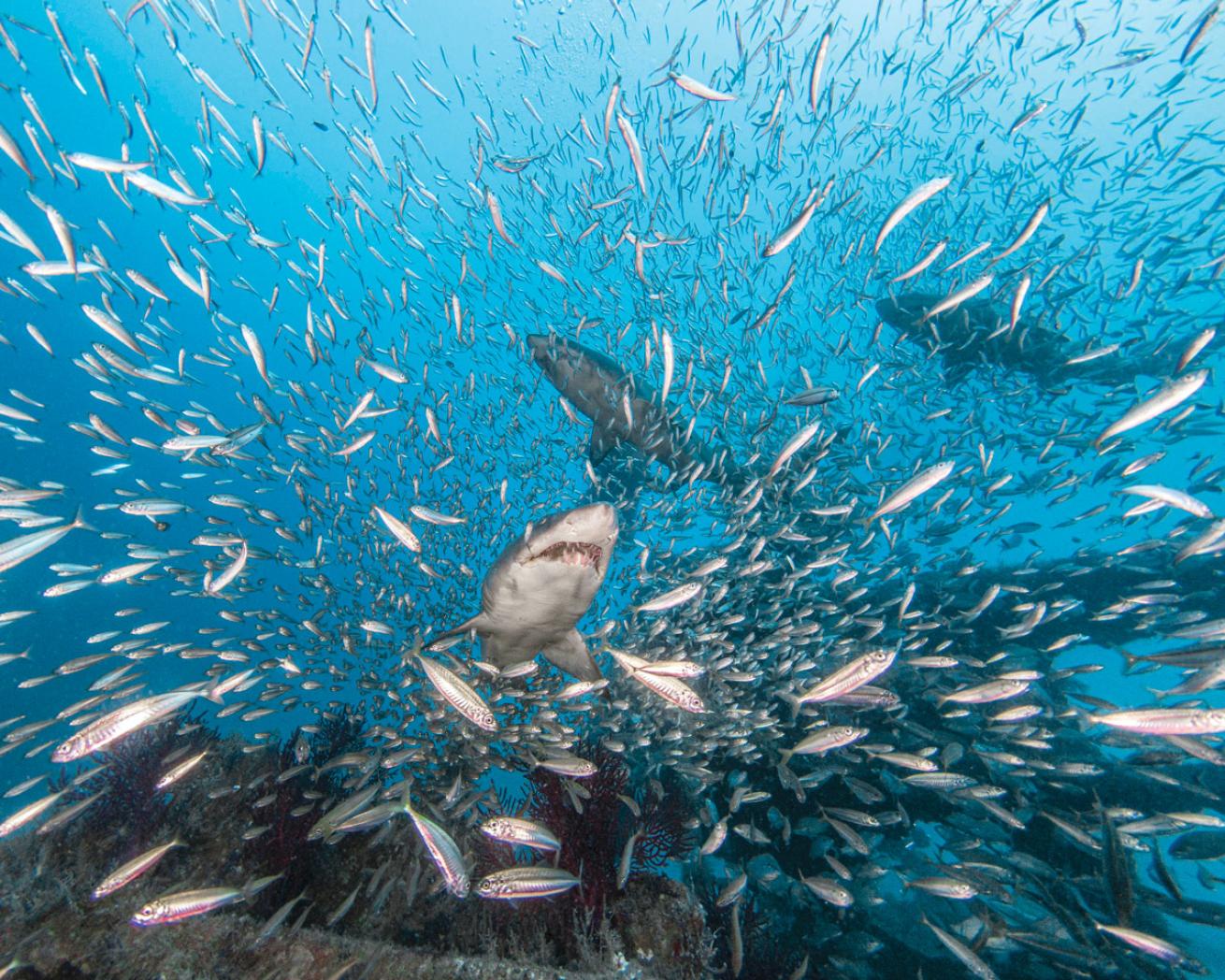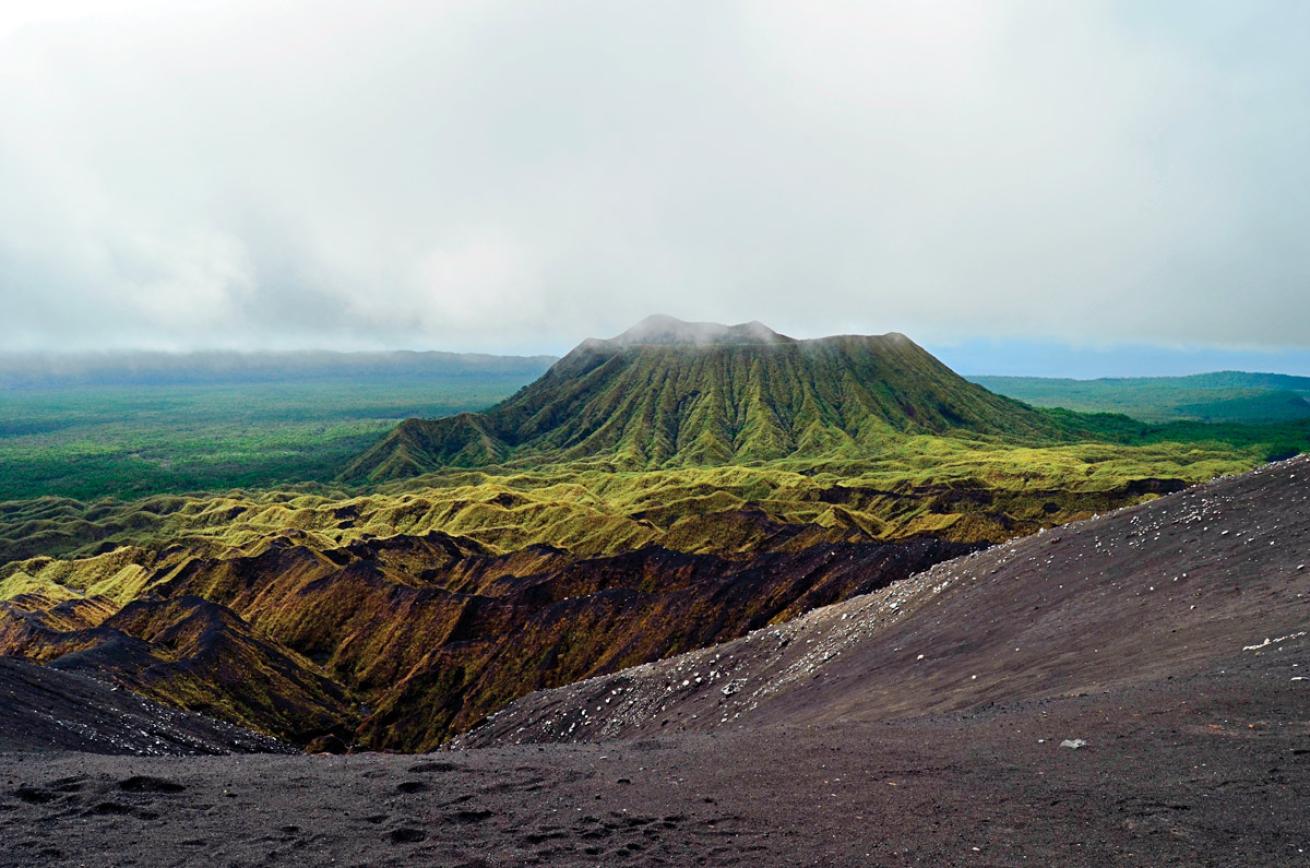Dive Hotspots: Truk Lagoon, North Carolina and Vanuatu

Steve JonesThe Hoki Maru was wrecked with a cargo hold full of machinery.
Planning a trip to one of these dive hotspots? Here’s what you need to know. Featuring insight from locals, tips for timing seasonal experiences and the scoop on popular dive sites, as well as some lesser-known dives you’ll want on your radar too.
Truk Lagoon
Under the Radar
Truk’s many shipwrecks are rightfully legendary. For something winged and just as wondrous, dive the B6N Jill wreck, a World War II torpedo bomber. “We discovered it in 40 meters still with a torpedo under its belly, intact canopy, guns, ammunition and a big double banked 2,200 horsepower engine,” says Lance Higgs, of the SS Thorfinn liveaboard. “It’s in amazingly good condition, with few knowing of it.”
The Classic Dive
The Shinkoku Maru is a fan favorite, says Cliff Horton, of Odyssey Adventures, adding that one of his captains refers to it as the “name-your-own-adventure dive.” The 503-foot-long wreck is loaded with marine life and soft coral, and has easy penetrations where divers can see a medical room, bathrooms and telegraphs, he says.“Plus, it has one of the best engine room tours for those looking for a more advanced dive. You could do a hundred dives on the wreck and still not see everything.”
Dive Report
On a recent dive on the HokiMaru, the ocean was as calm as a lake and dolphins rode the bow to the dive site, says Odyssey Adventures’ Brandi Mueller. Underwater, the divers explored a cargo hold with construction equipment, including a tractor and trucks. Upon emerging from the hold, an eagle ray winged past, she says. “A longnose hawkfish was spotted on the safety stop, and batfish played in the divers’ bubbles.”
Related Reading: Dive Hotspots: Hawaii, Palau and Bahamas
Plan a Trip
Truk is the rare dive location with fairly stable conditions, says Horton. “The water temperature is almost always the same, about 84 degrees year-round. And because of the protected lagoon, it’s calm here most of the time,” he says. June to September, however, sees the highest rainfall, incase you’d rather time your trip for a drier time of year.
Second-Time Visitor
Guests often realize there is much more to each of Truk Lagoon’s legendary wrecks than can be explored during a normal vacation, says Horton. Second-time visitors look forward to exploring other parts of wrecks they didn’t have time to see on their first trip. Consider adding a visit to the neighboring island of Yap, known for its resident manta rays.

Lureen FerrettiFish evade stalking sharks off the coast of North Carolina.
North Carolina
Under the Radar
People are always surprised to hear about the sheer number of wrecks off North Carolina’s Crystal Coast (an 85- mile stretch of coastline in the southern Outer Banks), says Debby Boyce, of Discovery Diving. “There’s a reason why it’s called the Graveyard of the Atlantic,” she says.“There are upward of 50 wrecks available for divers just offshore here. ”Tug boats, cargo ships and World War II German U-boats are among your options for exploring.
The Classic Dive
Divers should be sure not to miss the Caribsea, says Christian Corbitt, of Encounter Scuba, about the 261-foot-long ship sunk by a Nazi submarine off the coast of North Carolina in March 1942. “She was carrying manganese ore from Cuba to Virginia when she was torpedoed,” he says.“She’s now a crowd favorite for seeing sand tiger sharks, sometimes hosting as many as 50 at a time.” The animals seem to be most fond of hanging out in the ship’s ballroom, he says.
Dive Report
Macro photography has been a hit among Crystal Coast divers of late, says Robert Purifoy, of Olympus Dive Center. “The wrecks are full of small life in addition to the big animals we are known for,” he says. Purifoy says recent months have been spectacular. “The shipwrecks are teeming with marine life that’s eager to greet divers, and we are seeing wild horses and dolphins on the way to almost every dive,” he say.
Plan a Trip
The Crystal Coast can be dived year-round, but May to October is considered the best season for diving, with August and onward bringing sand tiger sharks to the wrecks in the greatest numbers.“Divers should know they’ll be able to get up close and personal with some of the diverse marine wildlife living around the wrecks,” Boyce says.
Second-Time Visitor
Repeat visitors to this gorgeous stretch of coastline usually take a ferry to Cape Lookout for a topside adventure. “Cape Lookout is home to a beautiful lighthouse built in 1859,” Corbitt says.“There’s a museum on site with friendly staff to answer questions, and visitors can even rent an ATV to cruise the island on a self-guided tour.”

Nina Janesikova/ ShutterstockTopside attractions on Vanuatu include active volcanoes
Vanuatu
Under the Radar
The three-masted Star of Russia, upright in about 112 feet of water, makes for a fascinating wreck dive in Port Vila Harbour, says Vanuatu dive representative Michael Symons. “This wreck is a 19th-century sailing ship and is a great way to acclimatize to wreck diving here,” he says. Another thing that often surprises divers in Vanuatu’s waters is encounters with a very special marine mammal. “You can often spot dugongs on dives, and snorkeling tours can be arranged where they can be seen in abundance,” he says.
The Classic Dive
The wreck of the 615-footlong SS President Coolidge—a former American luxury cruise ship that was used for troop transport during World War II—can be dived either from the shore or during boat trips and is one of the most superlative wrecks on the planet. The ship met its demise in 1942 after striking Allied mines and can be dived in 69 feet of water.
Dive Report
A recent dive at Rock Star City was an all-out fish frenzy typical of healthy South Pacific reefs. “This big former coral rock stretches from 12 to 18 meters depth and is home to loads of fish,” says Anne Nesheim of Gone Diving Vanuatu, naming all manner of wrasse,parrotfish, groupers, triggerfish, unicornfish, sweetlips, pufferfish, yellowback fusiliers, gobies, blennies and even a sea turtle living atop one of the bommies among the critters typically seen. “We even had an octopus on a recent safety stop,” she says.
Related Reading: Dive Hotspots: Saba, Malta and Loreto
Plan a Trip
Operators in Santos—including Dive @ Turtle Bay Lodge and Eco Dive Vanuatu—offer trips to Vanuatu’s Blue Holes.“These are amazing, clear freshwater ponds similar to the cenotes in Mexico,” Symons says.
Second-Time Visitor
If you missed getting to the island of Tanna (south of the more developed island of Efate, home to Port Vila), make it a priority on a return trip to Vanuatu. “It has worldclass reefs, dugongs, turtles, amazing macro and, of course, the volcano to visit when topside,” says Symons.






